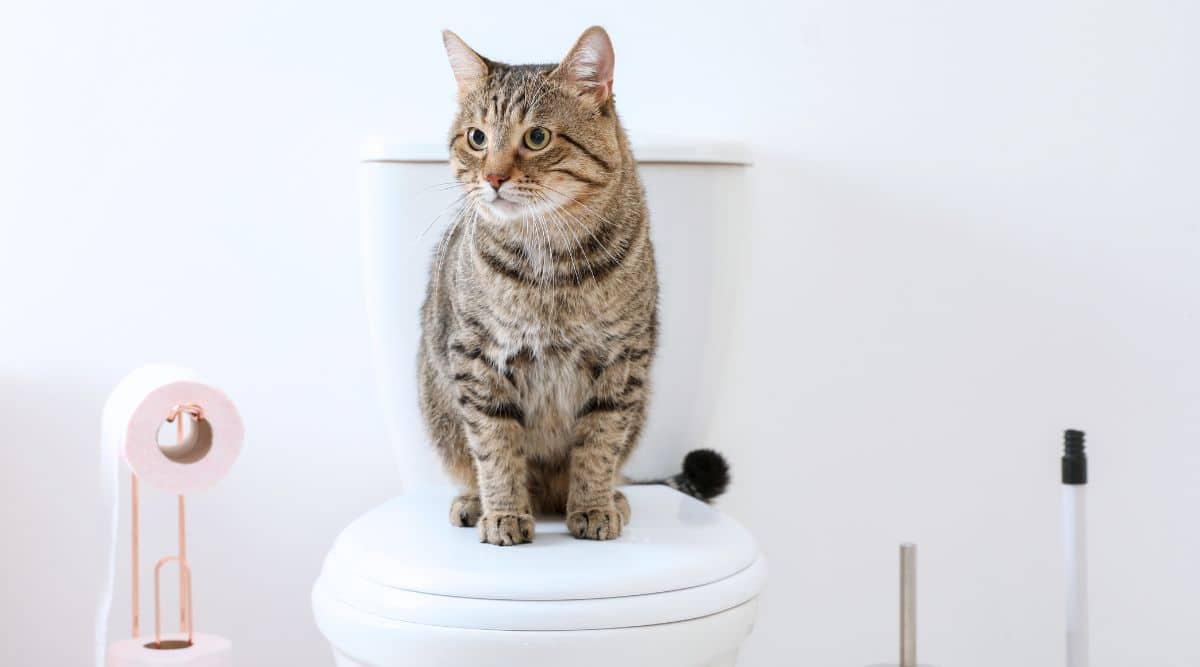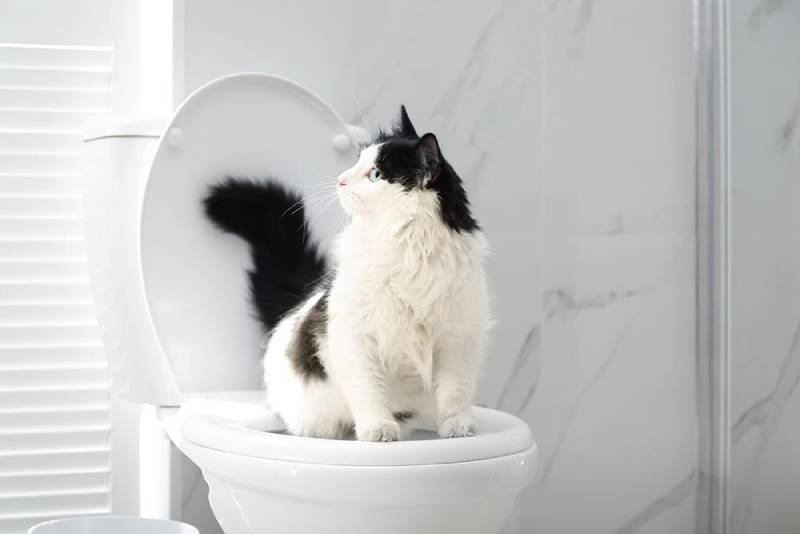Our Effects of Flushing Animal Waste Down the Toilet
Our Effects of Flushing Animal Waste Down the Toilet
Blog Article
Right here below you will discover a good deal of awesome advice when it comes to Can You Flush Dog and Cat Poo Down the Toilet?.

When it concerns taking care of waste, especially animal waste, lots of people typically consider the practical option of flushing it down the commode. However, this relatively very easy service can have significant consequences for the atmosphere and public health. In this article, we'll explore why flushing animal waste down the toilet is a negative idea and supply alternate approaches for appropriate disposal.
Intro
Proper waste disposal is vital for keeping environmental sustainability and public health. While it may seem safe to flush animal waste down the commode, it can bring about numerous problems, both for the environment and human health.
Dangers of flushing animal waste
Ecological impact
Purging animal waste introduces dangerous bacteria and pathogens right into waterways, which can negatively impact water communities. These pathogens can pollute water resources and harm marine life, disrupting fragile communities.
Public health worries
Pet waste has unsafe bacteria such as E. coli and Salmonella, which can position severe health dangers to people. Purging animal waste down the commode can pollute water products, bring about the spread of diseases and infections.
Alternatives to flushing
Instead of flushing pet waste down the commode, there are a number of different disposal techniques that are more environmentally friendly and sanitary.
Composting
Composting animal waste is an environment-friendly way to get rid of it. By composting, raw material is broken down into nutrient-rich dirt, which can be made use of to feed gardens and plants.
Garbage dump disposal
Taking care of animal waste in a land fill is an additional option. While not as environmentally friendly as composting, it is a more secure option to flushing, as it protects against the contamination of water resources.
Pet garbage disposal systems
There are specialized pet dog waste disposal systems offered that securely and hygienically dispose of pet waste. These systems typically use enzymes to break down waste and get rid of odors.
Steps to correct animal garbage disposal
To make certain appropriate disposal of pet waste, follow these steps:
Scooping and bagging waste
Frequently scoop and bag animal waste making use of naturally degradable bags. This prevents waste from polluting the setting.
Making use of assigned waste bins
Dispose of bagged animal waste in designated waste bins, such as garden compost bins or garbage dump bins. Avoid flushing it down the commode at all prices.
Cleaning up litter boxes and pet locations routinely
Regularly clean can and pet locations to stop the buildup of waste and microorganisms. Usage pet-safe cleaning items to keep health.
Benefits of proper disposal methods
Taking on correct disposal techniques for pet waste supplies several benefits:
Lowered environmental pollution
Correct disposal methods minimize the danger of environmental pollution, shielding rivers and environments from contamination
Decreased threat of water contamination.
By staying clear of flushing animal waste down the bathroom, the risk of water contamination is substantially minimized, guarding public health.
Enhanced sanitation and health
Proper disposal approaches promote far better sanitation and hygiene, developing a much safer environment for both people and pets.
Final thought
Finally, purging animal waste down the commode is unsafe to the environment and public health. By taking on alternative disposal methods and following proper waste management methods, we can minimize the adverse influence of pet waste and add to a cleaner, healthier world.
What To Do With Dog Poo – The Do's And Don'ts Of Disposing Of Faeces
Dog poo bins
Some councils provide dedicated dog waste bins in popular dog-walking areas that can take dog poo that has been bagged but you can legally dispose of dog waste in any public litter bin, as long as it is securely bagged. This also applies to your wheelie bin at home.
Do not flush
Water companies do not recommend flushing dog faeces down the toilet because certain parasites can survive the water processing treatment and are potentially harmful to humans. You should also never consider flushing dog poo that has been bagged down the toilet as the bags will not break down and instead create severe blockages in the sewage system.
In the woods
The Forestry Commission promotes a ‘stick and flick’ method for dealing with waste in the woods. This means finding a stick and using it to flick any poo from off the path so that it is out of the way of other walkers. You could also bury it as long as it is not in an area where there might be livestock.
Livestock
Parasites found in dog poo can be transmitted to livestock if they inadvertently eat infected faeces that has been left on grazing land. This could result in the death of sheep or abortion in cattle so you should always make sure you pick up your dog’s waste in fields where livestock could be present.

Regularly clean can and pet locations to stop the buildup of waste and microorganisms. Usage pet-safe cleaning items to keep health.
Benefits of proper disposal methods
Taking on correct disposal techniques for pet waste supplies several benefits:
Lowered environmental pollution
Correct disposal methods minimize the danger of environmental pollution, shielding rivers and environments from contamination
Decreased threat of water contamination.
By staying clear of flushing animal waste down the bathroom, the risk of water contamination is substantially minimized, guarding public health.
Enhanced sanitation and health
Proper disposal approaches promote far better sanitation and hygiene, developing a much safer environment for both people and pets.
Final thought
Finally, purging animal waste down the commode is unsafe to the environment and public health. By taking on alternative disposal methods and following proper waste management methods, we can minimize the adverse influence of pet waste and add to a cleaner, healthier world.
What To Do With Dog Poo – The Do's And Don'ts Of Disposing Of Faeces
Dog poo bins
Some councils provide dedicated dog waste bins in popular dog-walking areas that can take dog poo that has been bagged but you can legally dispose of dog waste in any public litter bin, as long as it is securely bagged. This also applies to your wheelie bin at home.
Do not flush
Water companies do not recommend flushing dog faeces down the toilet because certain parasites can survive the water processing treatment and are potentially harmful to humans. You should also never consider flushing dog poo that has been bagged down the toilet as the bags will not break down and instead create severe blockages in the sewage system.
In the woods
The Forestry Commission promotes a ‘stick and flick’ method for dealing with waste in the woods. This means finding a stick and using it to flick any poo from off the path so that it is out of the way of other walkers. You could also bury it as long as it is not in an area where there might be livestock.
Livestock
Parasites found in dog poo can be transmitted to livestock if they inadvertently eat infected faeces that has been left on grazing land. This could result in the death of sheep or abortion in cattle so you should always make sure you pick up your dog’s waste in fields where livestock could be present.

Do you enjoy reading up on Can You Flush Dog and Cat Poo Down the Toilet?? Give a review directly below. We would be happy to see your responses about this blog posting. In hopes that you visit us again soon. Sharing is caring. Who knows, you may be doing someone a favor. Thanks for your time. Return soon.
This Resource Report this page